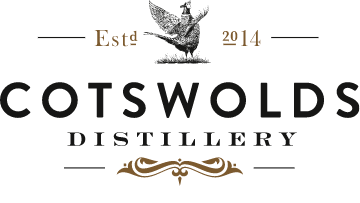
One of the most iconic symbols of Easter and Spring is undeniably the lamb, and the lambing season in the Cotswolds is well underway. The lush, green hills of our Area of Outstanding Natural Beauty make it the perfect place for grazing, and rearing sheep is an agricultural tradition that has gone on to define the Cotswolds landscape over the past few centuries. During the Middle Ages, the Cotswolds was one of the wealthiest parts of the country due to its large output of high-quality wool, putting it right at the heart of the thriving medieval wool trade in England.
After the Norman conquest in 1066, England largely became a nation of sheep farmers and English wool was considered by the finest weavers on the continent as the best in Europe. The wool produced therefore became a symbol of national prosperity and was soon considered to be the ‘jewel in this realm’. Wool merchants would travel across the Channel from distances as great as Florence to buy this very precious textile. To this day, the Lord Speaker in the House of Lords sits on a woolsack covered in red cloth which indicates the significance of the wool trade in the Middle Ages - a tradition which dates back to the time of Edward III in the 14th Century.
According to a 12th Century saying, ‘in Europe the best wool is English and in England the best wool is Cotswold’. The ‘Golden Fleece’ obtained from the golden, long-haired Cotswold Lion breed, thought to be introduced by the Romans during their invasion of our British Isles, was renowned for its heavy wool clip. The market towns of the Cotswolds were bustling, with wealthy wool-merchants from rich cloth-making towns abroad flocking to the hills to get their hands on the finest Cotswold wool.
As a result of the flourishing wool trade, the Cotswolds accrued a great wealth, and the impact of this wealth can still be seen to this day. Many towns and villages in the Cotswolds are home to ‘wool churches’ - that is, churches which were built or enlarged by the local wool-merchants. These devout wool-merchants adorned their churches in hope of securing a spot in heaven. The churches typically feature Gothic characteristics - the favoured architectural style of the time - such as imposing towers, large stained glass windows, menacing gargoyles and decorative interiors. The Church of St. John the Baptist in Cirencester, St. James’ Church in Chipping Campden and St. Peter’s Church in Winchcombe are some of the finest examples and are certainly worth a visit if you’re passing.
There are also several places close to the distillery which bear the historic marks of the medieval wool trade. The small market town of Chipping Campden, about 20 minutes from the distillery, was home to one of the most influential wool-merchants, William Greville, whose ledger stone describes him as ‘the flower of the wool-merchants of all England’. Greville was originally from the town, although he also became a Citizen of London, and his town house on the High Street remains one of the oldest buildings in Chipping Campden. Our neighbouring town, Shipston-on-Stour, supposedly derives its name from Sheep-wash-Town, and the sheep wash still remains in Sutton-under-Brailes, just a five minute walk from the distillery.
When you’re able to venture out into the Cotswolds again, don’t forget to look out for signs of its illustrious wool heritage!
Ingredients
(Serves 1):
- 30ml our Hedgerow Gin
- 15ml Lemon juice
- 10ml honey syrup or sugar syrup
- Champagne
How to make
Place the top 3 ingredients into an ice-filled shaker, shake and strain into a chilled coupe glass & top up with champagne.
Embellish with seasonal berries or pomegranate seeds.


